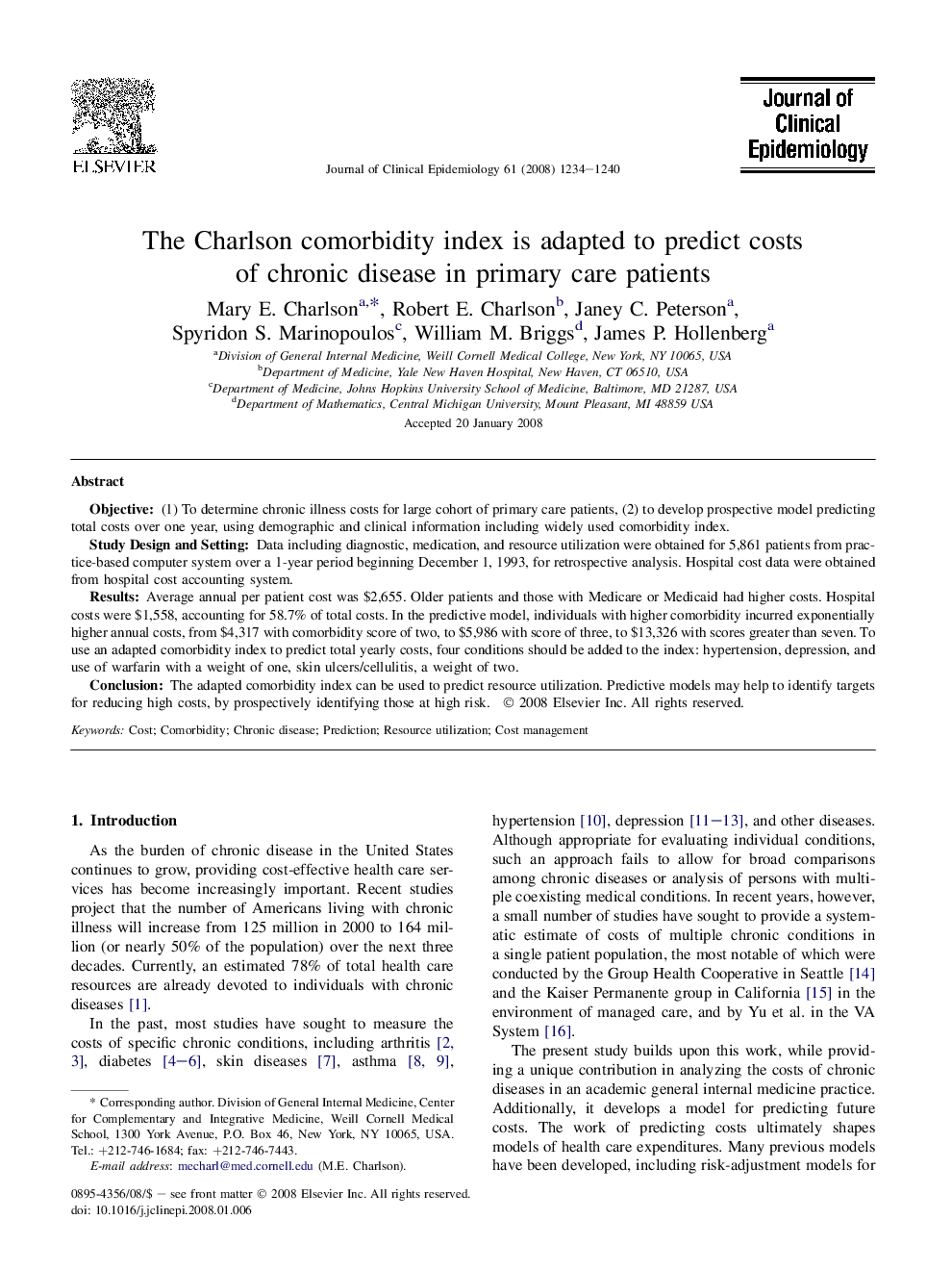| Article ID | Journal | Published Year | Pages | File Type |
|---|---|---|---|---|
| 1083276 | Journal of Clinical Epidemiology | 2008 | 7 Pages |
Objective(1) To determine chronic illness costs for large cohort of primary care patients, (2) to develop prospective model predicting total costs over one year, using demographic and clinical information including widely used comorbidity index.Study Design and SettingData including diagnostic, medication, and resource utilization were obtained for 5,861 patients from practice-based computer system over a 1-year period beginning December 1, 1993, for retrospective analysis. Hospital cost data were obtained from hospital cost accounting system.ResultsAverage annual per patient cost was $2,655. Older patients and those with Medicare or Medicaid had higher costs. Hospital costs were $1,558, accounting for 58.7% of total costs. In the predictive model, individuals with higher comorbidity incurred exponentially higher annual costs, from $4,317 with comorbidity score of two, to $5,986 with score of three, to $13,326 with scores greater than seven. To use an adapted comorbidity index to predict total yearly costs, four conditions should be added to the index: hypertension, depression, and use of warfarin with a weight of one, skin ulcers/cellulitis, a weight of two.ConclusionThe adapted comorbidity index can be used to predict resource utilization. Predictive models may help to identify targets for reducing high costs, by prospectively identifying those at high risk.
